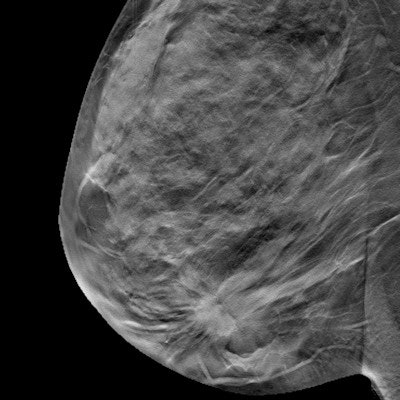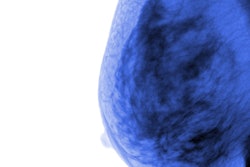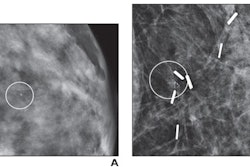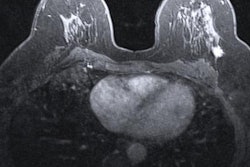
Surveillance could be a preferred management strategy for lobular neoplasia detected on digital breast tomosynthesis (DBT), according to research published August 29 in Clinical Imaging.
A team led by Yukun Gao, MD, and Manisha Bahl, MD, from Massachusetts General Hospital in Boston found a low upgrade rate of screening DBT-detected lobular neoplasia, meaning surgery could be avoided for women with atypical lobular hyperplasia and in women with screening-detected calcifications leading to diagnosis.
"These findings are consistent with guidelines based on digital 2D mammography data that recommend observation of lobular neoplasia rather than surgical excision in certain scenarios," Gao and Bahl wrote.
Lobular neoplasia refers to atypical lobular hyperplasia and lobular carcinoma in situ (LCIS), high-risk lesions that indicate an increased lifetime risk of breast cancer. Previous 2D mammography studies suggest wide variability in upgrade rates of lobular neoplasia, ranging from 0% to 45%. This has led to inconsistent management, the researchers noted.
Little data exists on such upgrade rates for lobular neoplasia detected on DBT, according to Gao and Bahl. They sought to add to the literature through an investigation of upgrade rates on DBT-detected cases, as well as determine the imaging and clinicopathological features linked to higher upgrade risk.
The team included data collected between 2013 and 2020 for 107 women with an average age of 55 years. The women had a total of 110 cases of atypical lobular hyperplasia and/or LCIS and either underwent surgery (n = 89) or at least two-year imaging surveillance (n = 21).
| Upgrade rates of DBT-detected lobular neoplasia | |
| Neoplasia characteristic | Upgrade rate |
| Overall upgrade rate to cancer | 5.5% |
| Upgrade to invasive cancer | 3.6% |
| Atypical lobular hyperplasia to cancer | 4.1% |
| LCIS to cancer | 9.4% |
| Cases presenting as calcifications | 4.2% |
| Cases presenting as noncalcified findings | 7.7% |
The study authors suggested that based on their findings, consultation with a breast surgeon and shared decision-making with active patient involvement are needed for lobular neoplasia management. This includes discussing future breast cancer risk and options for risk reduction and surveillance.
The National Comprehensive Cancer Network advises that for women with a prior lobular neoplasia diagnosis and a life expectancy of 10 or more years, risk-reducing counseling and therapy such as tamoxifen should be used. The American College of Radiology, meanwhile, recommends screening MRI for women with lobular neoplasia or atypical ductal hyperplasia, "especially in the setting of other breast cancer risk factors."
The full study can be found here.




















